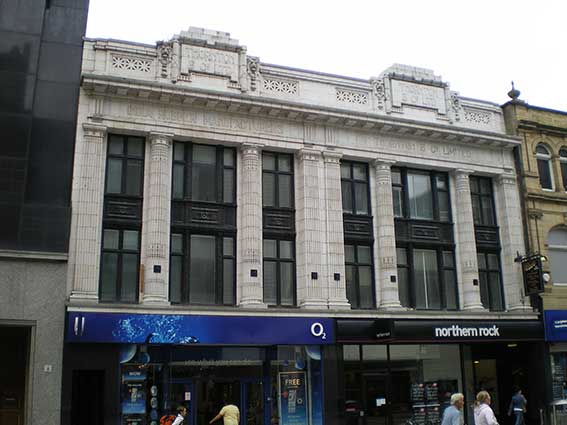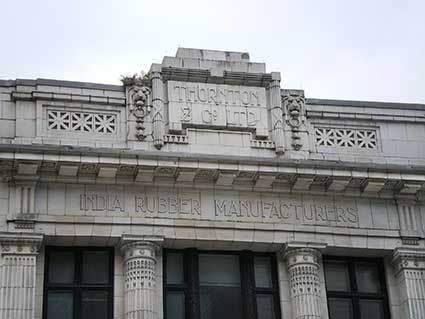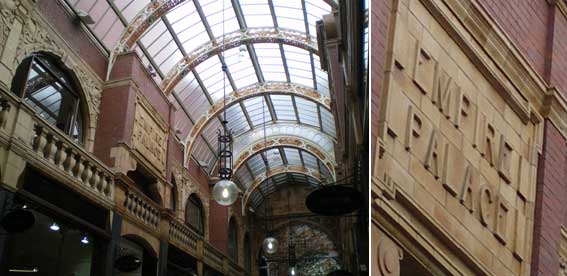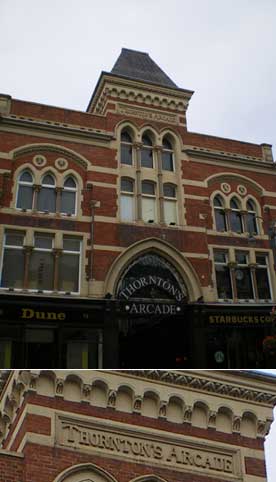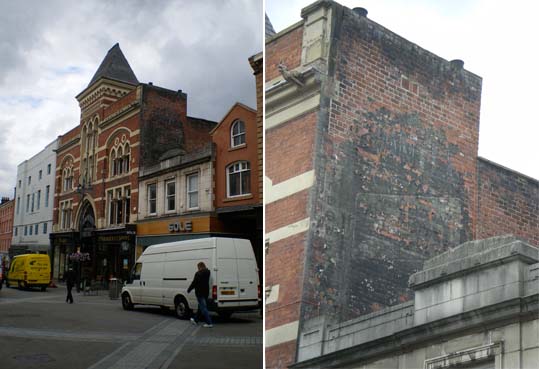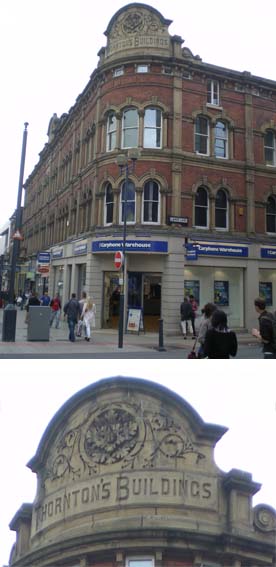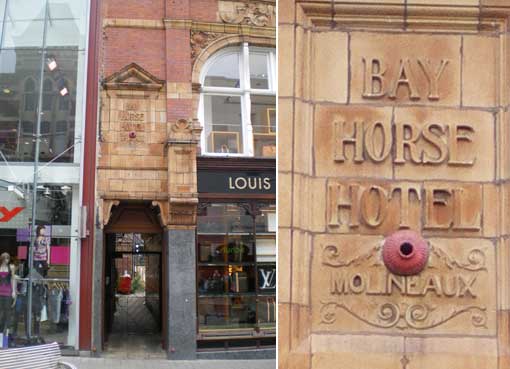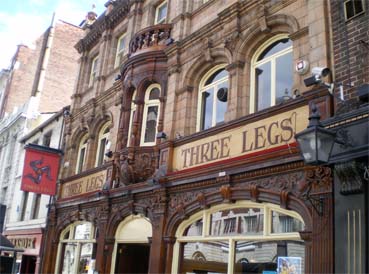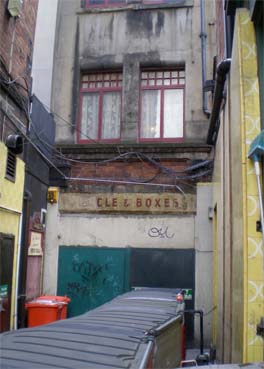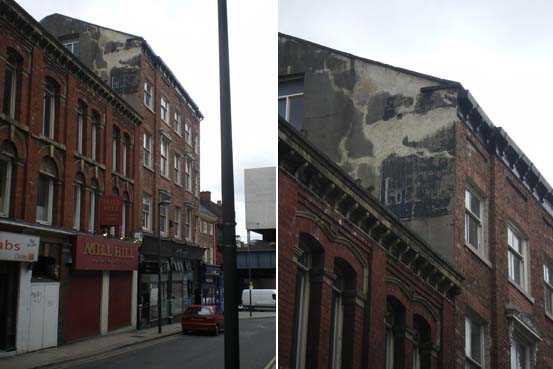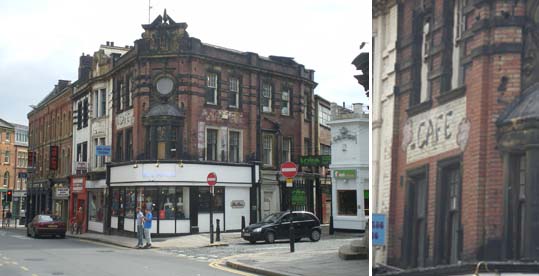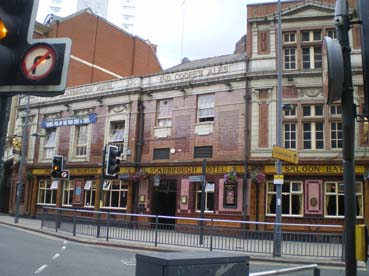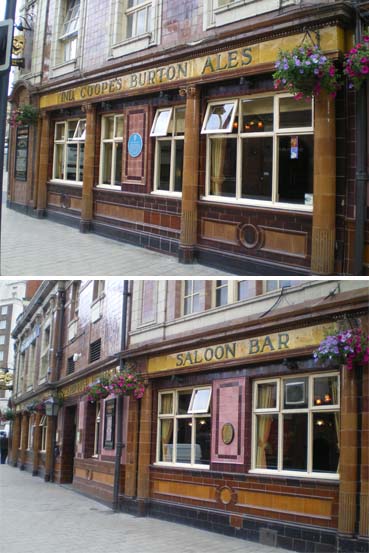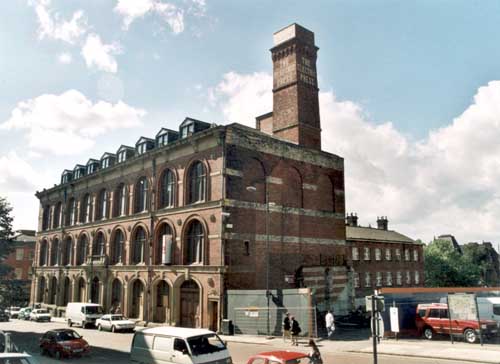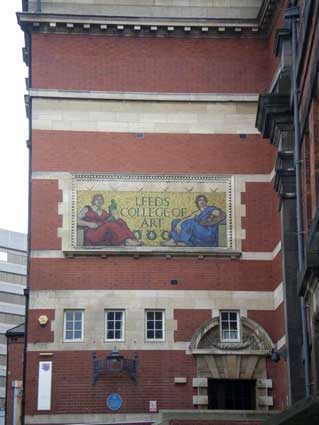'TIME BALL ... BUILDINGS'
is in white
sans-serif
capitals set in relief on dark green panels, just below the balustrade
at roof level. The building is Listed Grade II:
'Houses and shops, now restaurant.
Early C19 with elaborate decoration added c1872 (Nos 25 & 26) and
c1900 (No.24 and ground floor), restored 1993. Alterations for the firm
of J Dyson, watchmaker. Stucco facade, probably slate roof. 3 storeys,
4 windows. Quoins. Nos 25 and 26: 4-pane sashes, in canted bays to
first floor; architraves, moulded cornice on console brackets; moulded
panels below eaves with raised lettering: 'TIME BALL BUILDINGS';
modillion cornice between large console brackets and surmounted by
scrolled finials. Bay windows flank a large pedimented clock case, the
face carrying the lettering, 'JOHN DYSON 25 & 26'; elaborate
wrought-iron cresting rises above eaves line and includes spiral and
palmette motifs as decoration to the overthrow which terminates in a
weather vane and frames the shaft and time ball. No.24: added elaborate
wooden bay window rises through upper storeys and retains fine curved
glass panes at first floor, moulded cornice and small pediment
surmounted by small dome topped by a sphere; cantilevered from front of
bay is a large clock in frame with ironwork spandrels, letters D &
S, TEMPUS FUGIT, and the date, 1865, all surmounted by a figure of
Father Time. Ground floor: continuous pilastered shop front, entrances
centre and far left. INTERIOR: contains important fittings including
ornate panelling, etched missors, counters and shelving plus a
mechanism (now relocated) which formerly raised and lowered the window
displays, allowing safe storage in the cellar/vaults each night.
HISTORICAL NOTE: used by a distiller, saddler and trunk maker, a
haircutter and perfumier and a stationer through the C19 until c1869-71
when Boar Lane was being rebuilt and the premises were uninhabited. In
1872 J Dyson, watchmaker, was at No.26; by 1890 the firm occupied the
whole of the building. The gilded time ball mechanism was linked to
Greenwich and dropped at exactly 1pm each day; this feature, together
with the window mechanism, makes Dyson's a rare survival of elaborate
Victorian/Edwardian shop innovation and design. (Lingard S, University
of Leeds: Index of buildings in Briggate (unpublished thesis)). '
'COLLEGE'.
'IND, COOPE'S BURTON ALES ...
SCARBROUGH HOTEL ... SALOON BAR'
'SCARBROUGH HOTEL ... IND, COOPE'S
ALES'
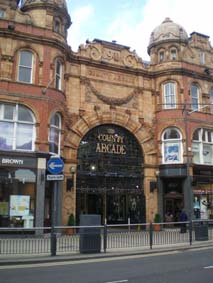 -
-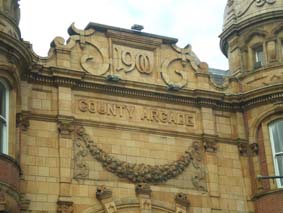 2009 images
2009 images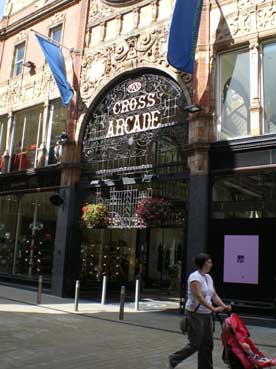 -
-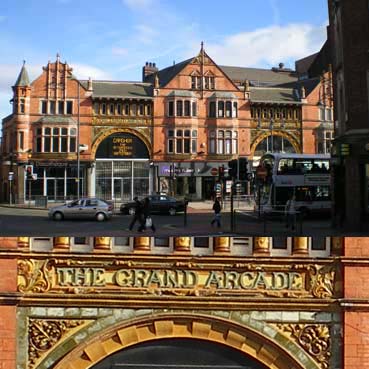

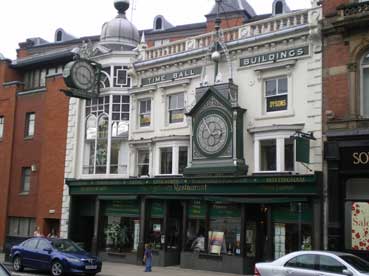 -
-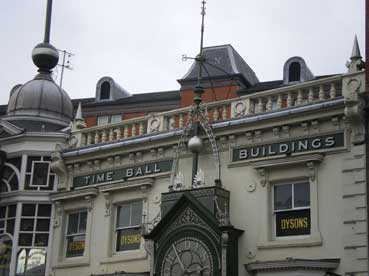
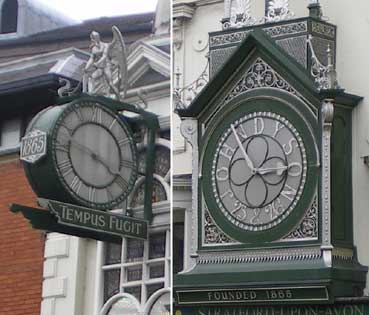
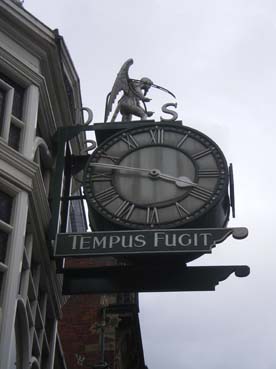
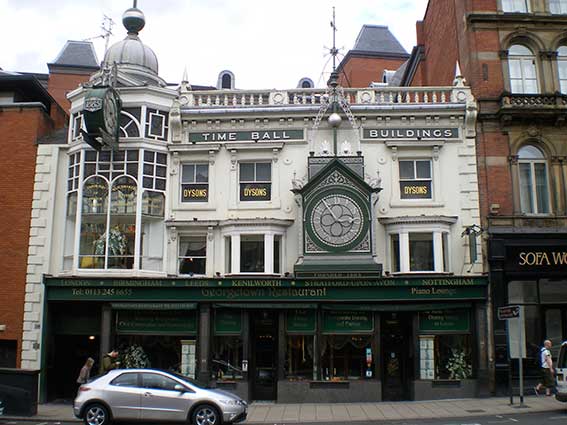
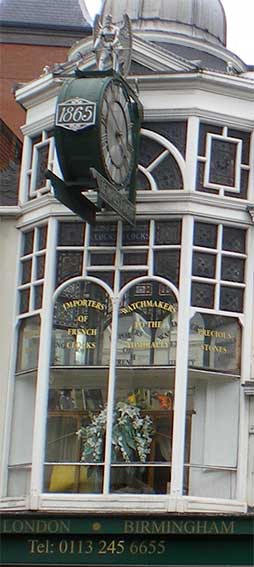
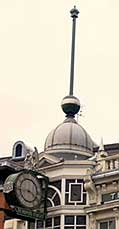 Time Ball Building in the
local press
Time Ball Building in the
local press